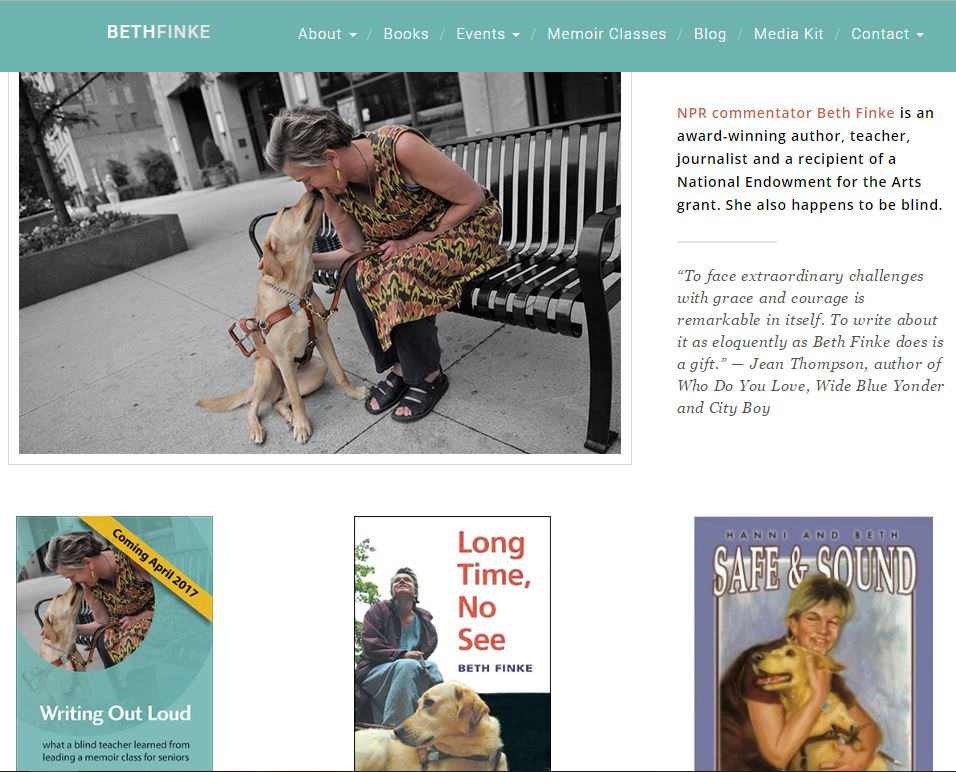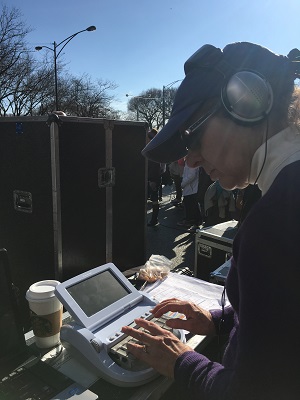Mondays with Mike: Beth’s online makeover
February 6, 2017 • 7 Comments • Posted in careers/jobs for people who are blind, memoir writing, Mike Knezovich, Mondays with Mike, Uncategorized, writingBeth’s posted extensively here about leading memoir classes for senior citizens—and she’s posted the work of some of her students, who have some pretty extraordinary tales.
That class has meant a lot to Beth and to the folks who are writing their own stories, so much so that it’s the basis for Beth’s next book. It’s called Writing Out Loud: What a Blind Teacher Learned from Leading a Memoir Class for Seniors. Beth’s been working very hard with her editor at Golden Alley Press (which published one of her student’s books, The House in Prague). Beth’s new book will be available this spring.
Golden Alley has also been hard at work on a painfully overdue revamp of Beth’s web site and the Safe & Sound blog. I got a preview of it this past weekend and I love it. For those of you who remember The Jeffersons TV show theme song, all I can say is, We’re moving on up, to a deee-luxe apartment in the sky. Or on the interwebs.
Golden Alley will likely launch the new web site and blog later this week—and here’s fair warning: the first time you visit the new online digs, don’t worry, it’s still us, just in a new place with a brand new look. Here’s what you need to know:
- Right now, Beth has a web site at bethfinke.com, and this blog, at https://bethfinke.wordpress.com. The new site at www.bethfinke.com will house the blog at www.bethfinke.com. So if you’re a Beth Finke fan, you’ll have one-stop shopping.
- If you subscribe to the blog, don’t worry, you’ll still receive posts in your inbox. Our Golden Alley Press people are going to bring you along. And if you’ve bookmarked the bethfinke.wordpress.com URL, you’ll get redirected.

Coming sooner! (Like this week.)
Bottom line: Things will look different, and a lot better, but you don’t have to do anything different.
Like I said, I’ve seen the work in progress and it’s a really nice site. The best site. A fabulous site. It’s going to bring coal back. It’s bigly. And Mexico is paying for it!
Just kidding. Sorry. Couldn’t resist.
But seriously folks, when you visit the new digs, don’t worry, it’s really us.




